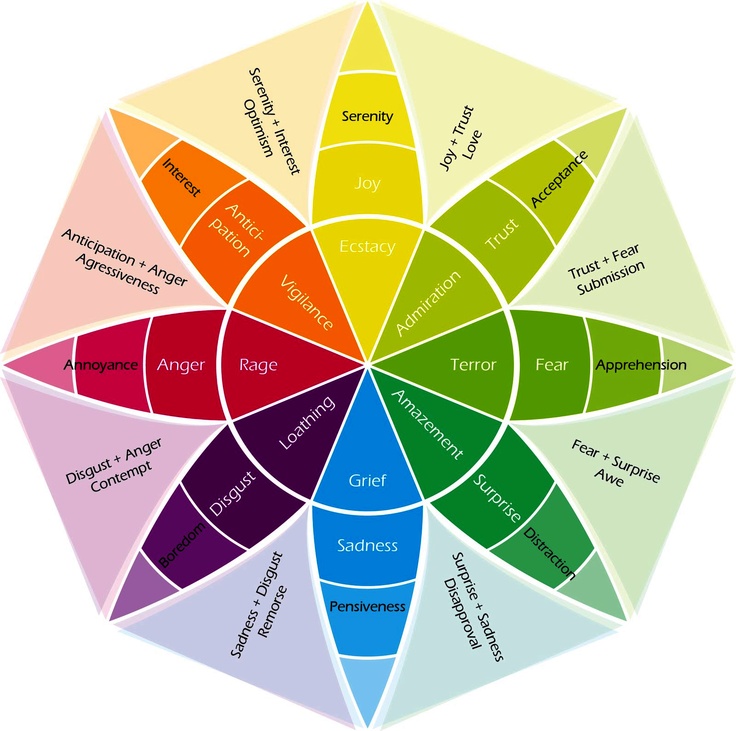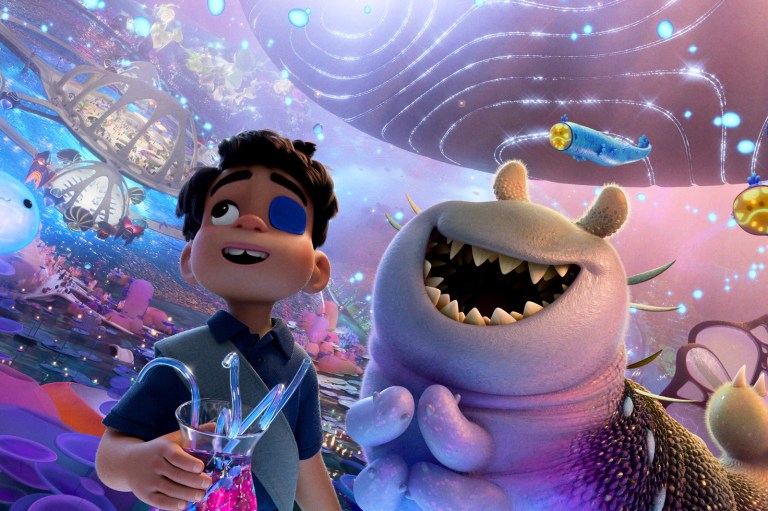
150+ List of Emotions, Feelings, and Moods
As human beings, we know that we all experience a range of emotions — that’s who we are, as social creatures. When we feel a strong emotion or a strong feeling, we tend to act on it, no matter what.
According to some scientists …emotions are judgments about the extent that the current situation meets your goals. Happiness is the evaluation that your goals are being satisfied, as when winning the lottery solves your financial problems and being asked out holds the promise of satisfying your romantic needs. Similarly, sadness is the evaluation that your goals are not being satisfied, and anger is the judgment aimed at whatever is blocking the accomplishment of your goals.”
Types of Emotions
Well, we can identify them and place them into 8 different categories, based on Robert Plutchik’s theory. Robert Plutchik was an American Psychologist and Professor who studied human emotions. Plutchik’s theory was that there are 8 distinct, basic human emotions: happiness, sadness, fear, anger, disgust, surprise, acceptance, and anticipation. He figured this out by developing an emotion wheel.

Although Plutchik’s wheel was (and is) one of the best-known concepts about our complex emotions, some people believe that there are only 2 or 3 basic emotions and everything else falls into a hierarchy of secondary emotions and tertiary emotions. For example, “love” can be broken down into secondary emotions—“affection” and “longing”—and even “affection” can be broken down into tertiary emotions of “liking,” “caring,” and “compassion.”
Along with emotions, we also have emotional responses. Psychologists who study emotional intelligence believe that when we feel either a negative or a positive emotion, we respond in 2 ways: psychological and behavioral.
When you experience fear, you know that there’s a lot more to it: your stomach turns, your heart races with anxiety, and you might even start sweating or getting full-body chills. This is your body’s fight or flight response, all controlled by within your nervous system. Therefore, this can be identified as a psychological response.
Now, because this is your body going into fight or flight mode, we tend to act out on these feelings. For example, if we are feeling fear or anxiety, we might start to cry. Or, if we experience feelings of relief after the fear or anxiety leaves our body, we might respond with facial experiences of a smile or raised eyebrows.
Combination of Emotions + Feelings
Anticipation + Joy = Optimism (with its opposite being disapproval)
Joy + Trust = Love (with its opposite being remorse)
Trust + Fear = Submission (with its opposite being contempt)
Fear + Surprise = Awe (with its opposite being aggression)
Surprise + Sadness = Disapproval (with its opposite being optimism)
Sadness + Disgust = Remorse (with its opposite being love)
Disgust + Anger = Contempt (with its opposite being submission)
Anger + Anticipation = Aggressiveness (with its opposite being awe)
There are so many kinds of emotion we can feel on a daily basis, but everything we feel develops out from our core emotions.
So let’s develop these words and understand more about our emotional vocabulary. Let’s say you’re feeling happy. Your emotional experience is excitement, content, joy, satisfaction, and the physical sensations you act on are smiling, laughing, feeling your body at peace. Make sense?
List Of Emotions
Here is a short list of emotions and our responses:
- Happiness
- a pleasant state of contentment satisfaction and overall wellbeing
- we respond with facial experiences like smiling or maybe laughing and a relaxed body stance/demure
- Sadness
- of grief, hopelessness, sorrow
- we respond by crying, staying quiet, or withdrawing from people/isolating ourselves
- Disgust
- mainly a reaction to something that is bad or evil—can be something that is as simple as rotten food to as extreme as a dead body
- we respond by turning away, vomiting, wrinkling our nose
- Anger
- a powerful emotion that can also play a part in your fight or flight response
- we respond with frowning, glaring, a change in the tone of voice, turning red, sweating, or aggressively lashing out
And now here’s a long list of emotions you might be feeling, including core emotions and secondary emotions and tertiary emotions:
- Happiness
- Pride
- Excitement
- Peace
- Satisfaction
- Acceptance
- Affection
- Joy
- Compassion
- Adoration
- Desire
- Grateful
- Love
- Humble
- Contentment
- Empathetic
- Amusement
- Appreciative
- Confident
- Optimistic
- Cheerful
- Carefree
- Sweet
- Kind
- Loyal
- Lust
- Gladsomeness
- Goofy
- Inspired
- Enchanted
- Funny
- Friendly
- Calm
- Sensual
- Awe
- Warm
- Romantic
- Aware
- Comfortable
- Free
- Courageous
- Hopeful
- Fascinated
- Tender
- Proud
- Relief
- Eager
- Sexy
- Understanding
- Patient
- Surprised
- Craving
- Wonder
- Amazed
- Sentimental
- Focused
- Determined
- Fearful
- Grieved
- Distracted
- Baffled
- Needy
- Lost
- Self-pity
- Pessimistic
- Hysteria
- Withdrawal
- Worried
- Doubtful
- Frazzled
- Sorrow
- Curious
- Guilt
- Apologetic
- Horrified
- Overwhelmed
- Nervous
- Anxious
- Terrified
- Cautious
- Panicked
- Alienated
- Challenged
- Jealous
- Fraud (feeling like a)
- Stressed
- Agony
- Umpty
- Shock
- Desperate
- Confused
- Alone
- Tense
- Curious
- Suspicious
- Paranoid
- Reluctant
- Skeptical
- Sulkiness
- Horror
- Sadness
- Unhappy
- Emptiness
- Misery
- Aching
- Insecure
- Apathetic
- Defeated
- Pity
- Submissive
- Lonely
- Melancholy
- Heartbroken
- Depressed
- Worn out
- Glum
- Cowardly
- Gloomy
- Hurting
- Disappointed
- Tired
- Lovesick
- Left out
- Resigned
- Miserable
- Shy
- Vulnerable
- Yearning
- Nostalgia
- Remorse
- Pensive
- Protective
- Dismay
- Distress
- Wanderlust
- Anger
- Annoyed
- Bitter
- Frustrated
- Dislike
- Spite
- Uncomfortable
- Offended
- Bitter
- Infuriated
- Rage
- Cheated
- Vengeful
- Impatient
- Disgust
- Animosity
- Insulted
- Cold
- Envy
- Uneasy
- Loathe
- Hopeless
- Troubled
- Embarrassed
- Boredom
- Wrath
- Disapproval
- Craving
- Outrage
- Awkward
- Hatred
- Resentment
- Lazy
- Mean
- Hatred
- Cranky
- Aggressive
- Horror
- Vigilant
- Pity
- Cruel
- Resentful
- Disgust
- Delirious
- Denial
- Obsessed
- Defensive
- Destructive
Understanding your feelings can be really hard. Psychologist Dacher Keltner even worked with Pixar to develop the children’s movie Inside Out where every character is a different emotion, to help viewers (children) recognize their feelings. With characters Joy, Disgust, Anger, Fear, and Sadness, this story allows us to understand that it’s okay to be emotional and to have feelings because that’s what makes you human.
Emotions FAQ:
What’s the difference between feeling emotional and feeling moody?
“Emotions” are intense but short-lived, while “moods” are milder yet long-lasting. Emotions are also caused by something specific: if someone does something to anger or disgust you, you might act out on that feeling. Moods happen randomly, aren’t triggered by anyone or anything, and typically have no real reason for their existence. For example, people who have diagnosed anxiety, depression, or bipolar disorder experience unexplainable moods frequently.
Where is shame be located on the emotional wheel?
In the categories of emotion, shame could be recognized as an emotional experience to sadness or disgust. It can often be confused with guilt. Shame is a self-conscious feeling we get when our positive state is interrupted and we feel unworthy and inadequate. “Feeling embarrassed” is also considered to be “feeling ashamed.”
How does someone respond to shame?
A person can act on their feeling of shame by becoming more emotional and developing feelings of anger and blame. For example, someone who is feeling ashamed for something—maybe they feel ugly or believe they aren’t smart enough—they will start to feel anger and will lash out on someone else and make them feel about something instead. It’s a classic case of bullying if you think about it: using someone else as a scapegoat for feelings.
What’s the difference between emotions and feelings?
According to iMotions, “Feelings are sparked by emotions and shaped by personal beliefs or memories.” So, emotions are something that is felt and manifested in the unconscious mind, while feelings are both emotional experiences and physical sensations that tend to linger and “soak in.” So, for example, if you have a fear of ghosts or the dark, you might also have an underlying fear of death. This feeling of fear lingers and can cause you to respond in an emotional (anxiety) and physical way (crying, heart racing). Feelings are a conscious response to emotional reactions.










